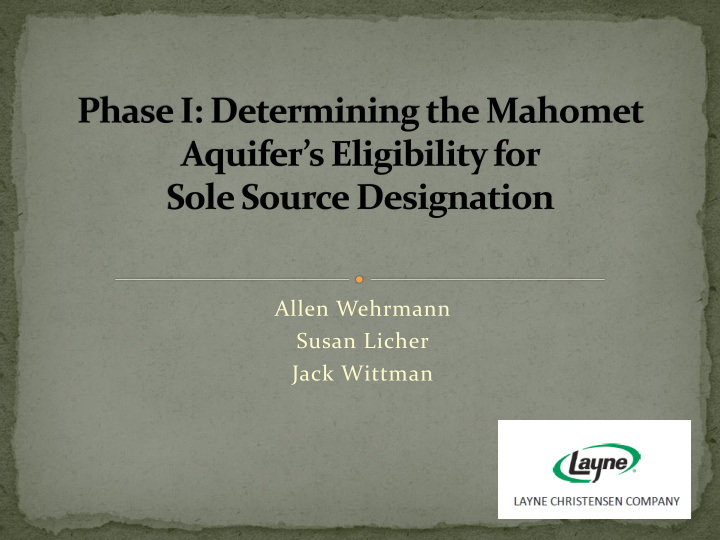



Allen Wehrmann Susan Licher Jack Wittman
SSA program was established under the Safe Drinking Water Act of 1974 To be designated as a Sole Source Aquifer The aquifer must supply at least 50% of the drinking water within the aquifer’s service area AND The volume of water from alternative sources is insufficient to replace the petitioned aquifer should it become contaminated (as defined by adequacy, economic, or legal constraints)
Definition of aquifer boundaries Description of the area served by the aquifer Determination of whether the aquifer is sole or primary source of drinking water (based on adequacy, economic, or legal constraints)
Public Water Supply Private and Source/Use Total (community and Other non-community) Petitioned Aquifer 53,148,762 4,311,408* 57,460,170 Other Aquifers 0 0 0 Surface Water 0 0 0 Imported 0 0 0 Total 53,148,762 4,311,408* 57,460,170 All data from ISWS Illinois Water Inventory Program for 2010, *except private use data from Kenny et al., 2009 (USGS) with data for 2005
Legal Constraints? Rule of Reasonable Use (not a constraint) Water Authorities (possible constraint) Low Flow Protection (constraint for certain surface waters) Economic Constraints? Construction of treatment plant alone examined for each community and deemed economically infeasible
Continuing the process of petitioning the USEPA for SSA designation is recommended. We also recommend: Including overlying aquifers as part of the petition because of hydraulic connections to the Mahomet, Excluding areas previously mapped to the west of the Illinois River because of a lack of hydraulic connection, and Not extending the petitioned aquifer boundary beyond published (and modeled) boundaries, as current hydrogeologic information does not support doing so.
Recommend
More recommend